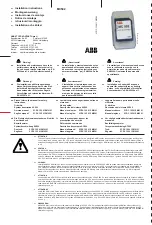
The Motherboard holds the computer's main processors and circuitry. It also contains the memory,
BIOS, interconnection circuitry and the expansion slots.
NTFS (NT File System)
NTFS is an advanced file system used by Windows NT. NTFS provides built-in compression, large
partition support and better performance.
Operating System
Software that controls the execution of programs and that may provide services such as resource
allocation, scheduling, input/output control, and data management. Although operating systems are
predominantly software, partial hardware implementations are possible.
OS/2
OS/2 is an IBM operating system. It is a fully preemptive, multitasking operating system. OS/2 also
supports HPFS, a very advanced file system.
Partition
A portion of a hard drive dedicated to a particular operating system or application and accessed as a
single logical volume.
PIO (Programmed input/output)
PIO is the original operating mode for most hard disk drives. PIO uses the CPU to manage the transfer
of data from the hard drive to memory.
Sector
On an ATA drive, the minimum segment of track length that the hard disk drive can assign to store
information.
Slave
Slave is the term given to the second device on an ATA cable.
Slave Present
Slave present is a setting on some hard disk drives that is to be used when the drive is a Master de-
vice. It allows the Slave device on the same bus adequate time to identify itself.
Track
One of the many concentric magnetic circle patterns written on a disk surface as a guide for storing
and reading data.
Ultra DMA (Ultra DMA/33)
A protocol for transferring data between a hard disk drive and the main memory without passing it
through the CPU. It allows transmission of data at up to 33.3 MB/sec.
Wipe
Wipe is a software utility that writes zeros to every sector on a hard disk drive up to 8 GB.
Windows® NT
Microsoft’s 32-bit server operating system.
Windows® 98
A Microsoft operating system.
Zap
A utility in which the first 128 sectors of a hard drive are overwritten with zeros.
Zip Drive
A Zip drive uses increased real density on floppy disk technology to increase storage capacity. Zip
diskettes have a storage capacity of 100 MB and therefore are an attractive backup option.
Page 29
Version 3.0


































